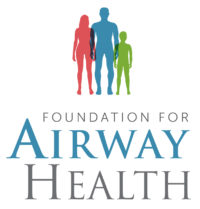One of the most common questions that I answer daily is “Do you think my tongue tie is reattaching?” I answer this question for my own clients as well as those who’ve had their procedure done and are looking for a second opinion. It can, and does, happen but I think fear (and social media) breed anxiety amongst those who undergo the procedure. I wanted to ease some minds by addressing the topic of reattachment.
A few things come to mind when thinking about this answer.
Good Tongue-Tie Release Provider
Who was your provider? Is that person a skilled tongue-tie release provider or someone who is just dabbling? Did you ask this person about their experience with tongue ties and frenectomies? Did they mention anything about exercises, bodywork, or orofacial myofunctional therapy? I’ve had a handful of clients recently who have contacted me after their frenectomy (tongue-tie release) and needed to start therapy. These clients all have children who’ve had treatments as a baby or toddler and they were aware of wound care and stretches. However, these adult patients were treated and sent on their merry little way with ZERO idea of what to do. One of them didn’t even receive wound care instructions. This is so upsetting to me, but I am thankful that there is enough knowledge circulating out there that people have a “sneaking suspicion” that they need to do something. So, with that said, please, please, please for your sake consider who your tongue-tie release provider is. Not every dentist wielding a laser is a viable candidate.
The Tongue-Tie Release Puzzle
Did you do combine your frenectomy with the appropriate orofacial myofunctional therapy and other body work? Again, this is a biggie. I have recently started therapy with 4 new clients who’ve recently had 2nd and 3rd revisions and never understood the necessity of pre-procedure myofunctional therapy until now. The stretches your tongue-tie release provider will teach you are stretches and are significantly different than the exercises that I will teach you. You need to do both for the most successful outcome of your procedure. I know the cost can sometimes be overwhelming, but the result is so important. None of my clients have been dripping with money, screaming “sign me up, sign me up”. Each one of them have come into the process with trepidation and concern about the cost. But, through the process of the comprehensive examination and gaining complete understanding of their symptoms, each one learned the value of the therapy and decided that it was necessary. All providers are different and we each have an “ideal protocol” that we would like to follow. I am no different. But when a client contacts me and has myofunctional needs bigger than their budget can allow, I always stress that something is better than nothing. I stress getting started. (Some even have to choose the Myo-2-Go program.) Start small and take baby steps. Many clients find a way to complete the therapy once they get started. It may take a little longer, but in the end, if the goals are reached then it doesn’t matter how “imperfect” the process was!
Tongue Tie Healing
Understand that your tongue will feel different as soon as it is released and that feeling will change as it heals and rebuilds a new collagen “scaffolding”. The goal is that as it heals, you are moving and stretching the tongue around, so it has no choice but to build a longer, thinner fiber. The reason that releases (frenectomies) are done is to improve function. If you have some reattachment but your function is dramatically improved, a revision will not always be recommended. Some highly respected names in the tethered oral tissue industry won’t even consider a revision until 6 -12 months after the first procedure. When the wound is healing, there will always be some contraction of the wound, which is normal. This tightness will often release in time as the stretches and exercises are completed.
I encourage you to be very diligent with your wound care, stretches and exercises. Time will tell if you need a second procedure. And if your tongue-tie was pretty significant, it sometimes takes two procedures (two-stage release) to completely release all restriction. But understand that these two procedures are not happening within weeks of each other. It is more likely months will lapse in between procedures to let the traumatized tissue heal to reduce further creation of scar tissue.


Meet Carmen Woodland
I found this path of passion years ago as a dental hygienist. After a stint in graduate school to earn my M.B.A., I decided that I needed to pivot. My heart was no longer in scraping teeth, but making a much bigger impact on lives touched by myofunctional impairment.
My story is personal and close to home. My sweet granddaughter was passed back and forth amongst doctors and therapists for years trying to figure out her speech, breathing, sleep, chewing and swallowing issues. It wasn’t until I completed more training that I knew her problem was a significant tongue-tie. Bingo.
Fast forward to now. I’m a crusader. A warrior. A voice for those who can’t find theirs, or who don’t have one.
I left clinical hygiene practice to start Integrative Myofunctional Therapy. It has evolved from a way to make a living, into an obsession!
I see clients all over the world and provide innovative, virtual therapy in the remotest of places.
In addition, I also
- Teach other dental hygienists, speech therapists & dentists how to become myofunctional therapists through the Myofunctional Therapy Training Acadedmy.
- Coach dental offices on how to implement myofunctional screening into the daily practice
- Speak in various settings
I’m an airway provider for the Foundation of Airway Health, where I work diligently for the recognition, diagnosis, and treatment of airway-related disorders.
And last but not least, I’m a proud member of several professional associations that afford me the opportunity to learn so that I can help you. My professional memberships include:


